Navigation
New Migratory Species Agreement to Conserve Small Whales, Dolphins and Manatees in Western Africa and Macaronesia
A new Memorandum of Understanding to conserve the West African Manatee and Small Whales in Western Africa and Macaronesia was concluded in Lomé, Togo, under the auspices of UNEP’s Convention on Migratory Species (CMS) on October 7, 2008.
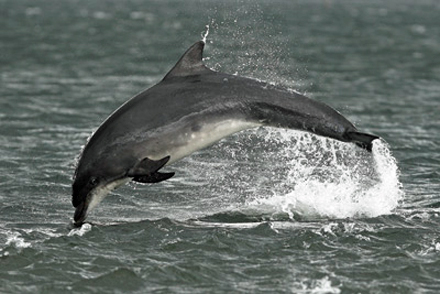 |
| Bottlenose Dolphin Photo by Charlie Phillips |
A new Memorandum of Understanding to conserve the West African Manatee and Small Whales in Western Africa and Macaronesia was concluded in Lomé, Togo, under the auspices of UNEP’s Convention on Migratory Species (CMS) on October 7, 2008.
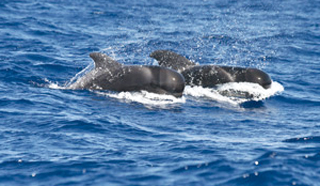 |
| Rissos Dolphins Photo by Nicola Hodgins |
The conservation instrument with two Action Plans for the conservation of these species was adopted at the second intergovernmental meeting on Western African and Macaronesian aquatic mammals (WATCH – Western African Talks on Cetaceans and their Habitats).
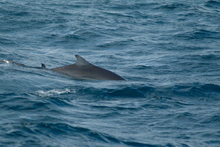 |
| Dwarf Sperm Whale Photo by Henk de Groot and Desiree Hilggrason |
More than 30 small cetacean species will be covered in the agreement area that stretches from Macaronesia, through Morocco to South Africa. Macaronesia includes the Azores, Madeira, Canary Islands, and Cap Verde and the African Atlantic Coast. The agreement area also includes freshwater areas for manatees in some of the African countries.
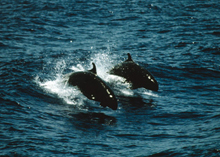 |
| False Killer Whale Photo by Brian Smith |
The need to conserve and raise awareness of western Africa’s marine mammals is as pressing as ever. Various threats, including direct and accidental catch, coastal development, pollution and habitat degradation, have caused western African marine mammal populations to decline rapidly. These issues require action on a regional, national and global level. The WATCH meetings and related activities under the auspices of CMS are an important part of the progress made in this field and can play a vital role in future conservation efforts.
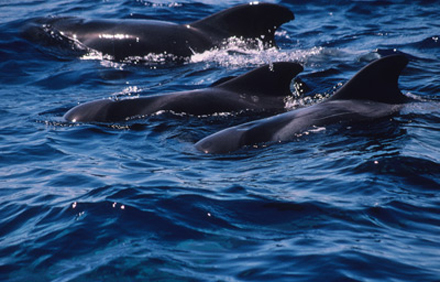 |
| Short-finned pilot whale Photo by Colin Wood |
The new instrument, which will serve as a permanent legacy of the Year of the Dolphin, is crucial for the conservation of marine mammals in the western African and Macaronesian region. It helps to facilitate transboundary cooperation by providing an international platform to negotiate and coordinate research and conservation measures. In this regard, CMS is reinforcing initiatives of other actors in the region. CMS seeks to provide a suitable legal and institutional framework to facilitate the implementation and further development of conservation efforts and optimize use of resources.
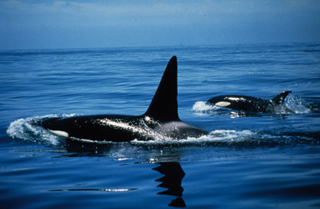 |
| Orca or Killer Whale Photo by Barbara Todd |
CMS Executive Secretary Robert Hepworth said: “The new agreement in western Africa is the fourth in our network of regional agreements, which now conserve migratory cetaceans in key areas of the Mediterranean Sea, Atlantic and Pacific Oceans, and beyond. Concluding this agreement, and obtaining so many signatories on the spot, is a real boost for marine conservation in the run-up to the CMS Conference of Parties in December. Now we need to encourage Portugal, Spain and the remaining western African Range States to sign the MoU. I hope CMS Parties as a whole will agree in December to work in partnership with the Range States to get the agreement working effectively across this enormous and critical area.”
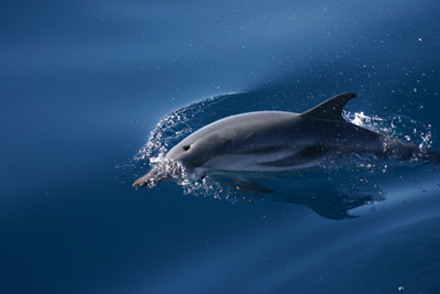 |
| Striped Dolphin Photo by Julia Neider |
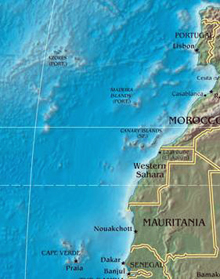 |
| Macaronesia Map from Wikipedia |
Fifteen country representatives signed the agreement (Angola, Benin, Cape Verde, Chad, Congo, Cote d'Ivoire, Equatorial Guinea, Gabon, Ghana, Guinea-Bissau, Liberia, Mali, Mauritania, Niger, Togo), which came into effect immediately on 3 October 2008 and will stay open for signature indefinitely.
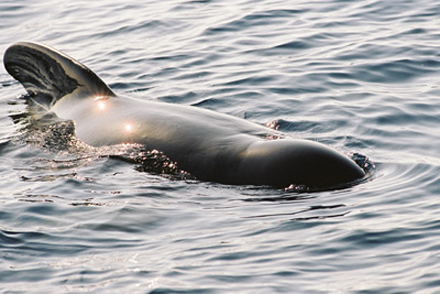 |
| Long-finned Pilot Whale Photo by Nico Schossleitner |
Links to other agreements to conserve whales and dolphins that were concluded under the auspices of CMS:
Contact:
Veronika Lenarz, UNEP/CMS Secretariat
Public Information
T. +49 228 815-2409
F. +49 228 815-2449
Search
Latest articles
Agriculture
- World Water Week: Healthy ecosystems essential to human health: from coronavirus to malnutrition Online session Wednesday 24 August 17:00-18:20
- World Water Week: Healthy ecosystems essential to human health: from coronavirus to malnutrition Online session Wednesday 24 August 17:00-18:20
Air Pollution
- "Water and Sanitation-Related Diseases and the Changing Environment: Challenges, Interventions, and Preventive Measures" Volume 2 Is Now Available
- Global Innovation Exchange Co-Created by Horizon International, USAID, Bill and Melinda Gates Foundation and Others
Biodiversity
- It is time for international mobilization against climate change
- World Water Week: Healthy ecosystems essential to human health: from coronavirus to malnutrition Online session Wednesday 24 August 17:00-18:20
Desertification
- World Water Week: Healthy ecosystems essential to human health: from coronavirus to malnutrition Online session Wednesday 24 August 17:00-18:20
- UN Food Systems Summit Receives Over 1,200 Ideas to Help Meet Sustainable Development Goals
Endangered Species
- Mangrove Action Project Collaborates to Restore and Preserve Mangrove Ecosystems
- Coral Research in Palau offers a “Glimmer of Hope”
Energy
- Global Innovation Exchange Co-Created by Horizon International, USAID, Bill and Melinda Gates Foundation and Others
- Wildlife Preservation in Southeast Nova Scotia
Exhibits
- Global Innovation Exchange Co-Created by Horizon International, USAID, Bill and Melinda Gates Foundation and Others
- Coral Reefs
Forests
- NASA Satellites Reveal Major Shifts in Global Freshwater Updated June 2020
- Global Innovation Exchange Co-Created by Horizon International, USAID, Bill and Melinda Gates Foundation and Others
Global Climate Change
- It is time for international mobilization against climate change
- It is time for international mobilization against climate change
Global Health
- World Water Week: Healthy ecosystems essential to human health: from coronavirus to malnutrition Online session Wednesday 24 August 17:00-18:20
- More than 400 schoolgirls, family and teachers rescued from Afghanistan by small coalition
Industry
- "Water and Sanitation-Related Diseases and the Changing Environment: Challenges, Interventions, and Preventive Measures" Volume 2 Is Now Available
- Global Innovation Exchange Co-Created by Horizon International, USAID, Bill and Melinda Gates Foundation and Others
Natural Disaster Relief
- STOP ATTACKS ON HEALTH CARE IN UKRAINE
- Global Innovation Exchange Co-Created by Horizon International, USAID, Bill and Melinda Gates Foundation and Others
News and Special Reports
- World Water Week: Healthy ecosystems essential to human health: from coronavirus to malnutrition Online session Wednesday 24 August 17:00-18:20
- STOP ATTACKS ON HEALTH CARE IN UKRAINE
Oceans, Coral Reefs
- World Water Week: Healthy ecosystems essential to human health: from coronavirus to malnutrition Online session Wednesday 24 August 17:00-18:20
- Mangrove Action Project Collaborates to Restore and Preserve Mangrove Ecosystems
Pollution
- Zakaria Ouedraogo of Burkina Faso Produces Film “Nzoue Fiyen: Water Not Drinkable”
- "Water and Sanitation-Related Diseases and the Changing Environment: Challenges, Interventions, and Preventive Measures" Volume 2 Is Now Available
Population
- "Water and Sanitation-Related Diseases and the Changing Environment: Challenges, Interventions, and Preventive Measures" Volume 2 Is Now Available
- "Water and Sanitation-Related Diseases and the Changing Environment: Challenges, Interventions, and Preventive Measures" Volume 2 Is Now Available
Public Health
- Honouring the visionary behind India’s sanitation revolution
- Honouring the visionary behind India’s sanitation revolution
Rivers
- World Water Week: Healthy ecosystems essential to human health: from coronavirus to malnutrition Online session Wednesday 24 August 17:00-18:20
- Mangrove Action Project Collaborates to Restore and Preserve Mangrove Ecosystems
Sanitation
- Honouring the visionary behind India’s sanitation revolution
- Honouring the visionary behind India’s sanitation revolution
Toxic Chemicals
- "Water and Sanitation-Related Diseases and the Changing Environment: Challenges, Interventions, and Preventive Measures" Volume 2 Is Now Available
- Actions to Prevent Polluted Drinking Water in the United States
Transportation
- "Water and Sanitation-Related Diseases and the Changing Environment: Challenges, Interventions, and Preventive Measures" Volume 2 Is Now Available
- Urbanization Provides Opportunities for Transition to a Green Economy, Says New Report
Waste Management
- Honouring the visionary behind India’s sanitation revolution
- Honouring the visionary behind India’s sanitation revolution
Water
- Honouring the visionary behind India’s sanitation revolution
- Honouring the visionary behind India’s sanitation revolution
Water and Sanitation
- Honouring the visionary behind India’s sanitation revolution
- Honouring the visionary behind India’s sanitation revolution

